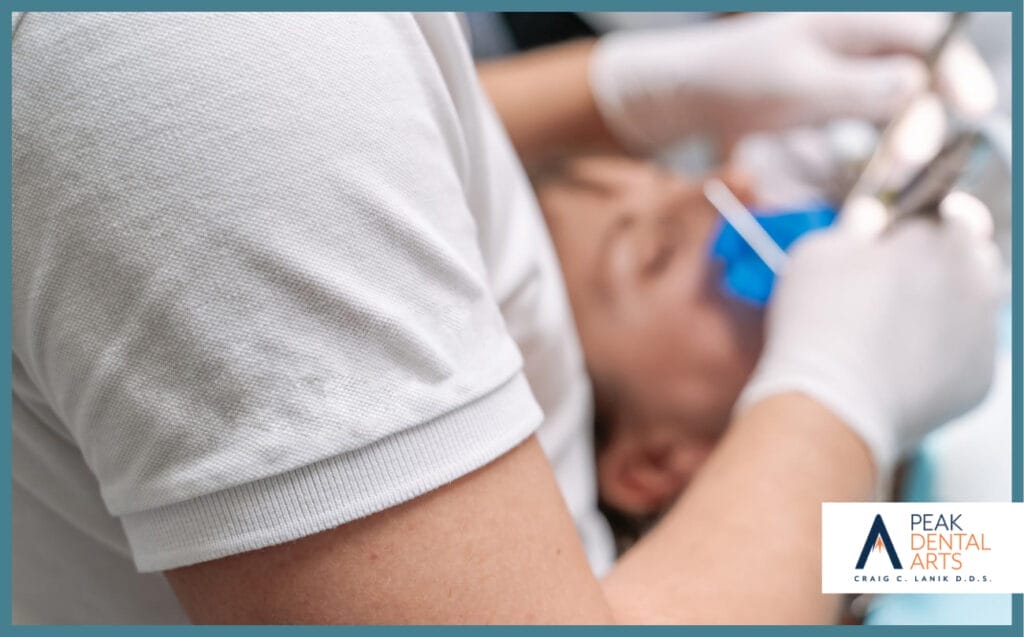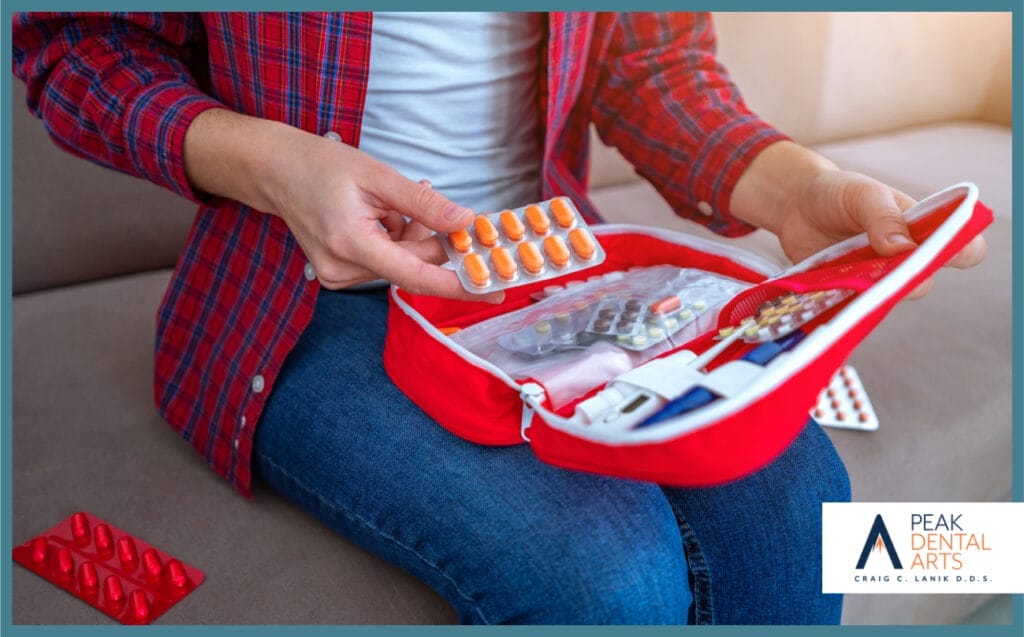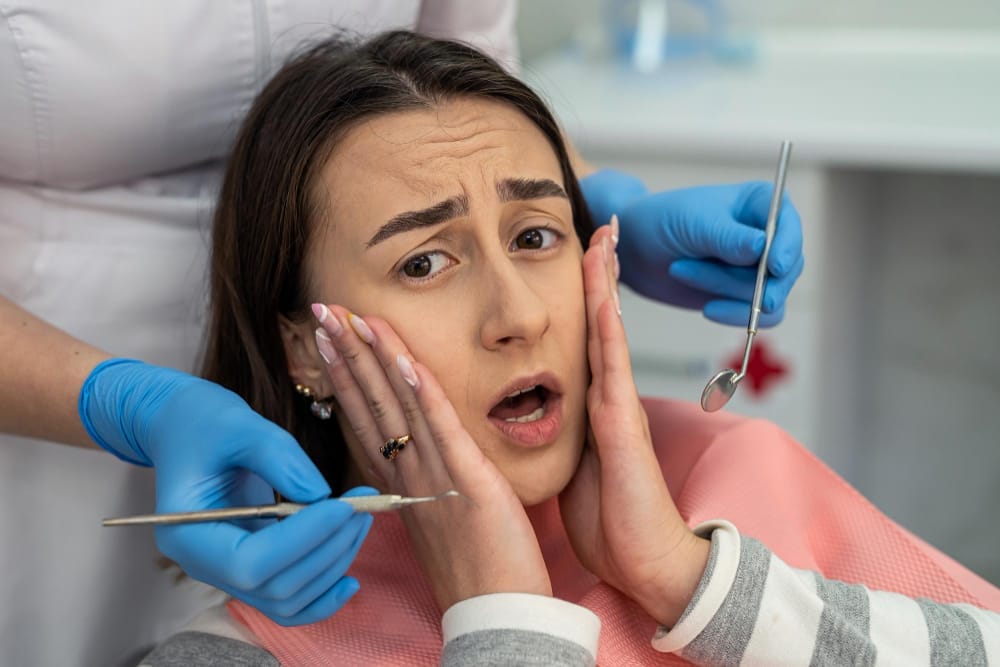Dental emergencies rarely strike at convenient times, but knowing how to respond can mean the difference between saving and losing a tooth. Whether it’s a knocked-out tooth, severe pain, or a broken crown, being equipped with the right knowledge and tools can help families handle a stressful situation, like a broken tooth or persistent bleeding, with confidence.

Understanding Dental Emergencies
A dental emergency requires immediate professional attention to address severe pain, stop bleeding, save a tooth, or treat an acute infection. Unlike routine dental concerns, these situations, whether infectious or traumatic, can’t wait for a regular appointment and need urgent care to prevent permanent damage.
Common Types of Dental Emergencies
Knocked-Out Teeth
Time is critical—you have about 30 minutes to save the tooth. Handle it by the crown only, keep it moist in milk or a save-a-tooth solution, and seek immediate dental care. Quick action significantly increases the chances of saving the tooth.
Severe Toothache
When accompanied by swelling, fever, or difficulty breathing/swallowing, a severe toothache may indicate a serious infection. If pain is intense, persistent, and unresponsive to over-the-counter medication, seek emergency care.
Cracked or Broken
Teeth While minor chips can wait, significant breaks that expose inner tooth layers need urgent attention. Signs of an emergency include visible yellow dentin, exposed pink/red pulp, or sharp edges that cut your mouth. Rinse with warm water and use a cold compress until you reach the dentist.
Lost Fillings or Crowns
Though less dramatic, lost fillings or crowns expose vulnerable tooth structures to further damage. Use temporary dental cement from the pharmacy to protect the tooth until you can see your dentist.
Soft Tissue Injuries
Severe cuts or tears to gums, cheeks, tongue, or lips that bleed heavily require immediate attention. Apply direct pressure with clean gauze for 15-20 minutes. If bleeding continues, seek emergency care.
Jaw Injuries
Signs of serious jaw injury include difficulty opening/closing your mouth, pain when biting, teeth misalignment, or facial swelling. For suspected breaks, immobilize the jaw and seek immediate medical attention.

Creating a Dental Emergency Kit
Just as every home needs a first aid kit, every family should maintain a dental emergency kit. Having these essential items readily available can help you respond quickly and effectively when dental emergencies occur.
Save-a-Tooth Solution or Container
Keep a small container of Save-a-Tooth solution or a clean, sealed container that can hold milk. These are crucial for preserving knocked-out teeth until you can reach a dentist. If you can’t find a Save-a-Tooth solution, milk can be an effective temporary storage medium for displaced teeth.
Disposable Gloves
It’d be wise not to dive into an emergency situation involving blood or bodily fluids from your mouth without wearing safety gloves.
Gauze and Clean Cloth
Stock several sterile gauze pads and a clean, soft cloth to manage bleeding and apply pressure when needed. These materials can help control bleeding from soft tissue injuries and provide a gentle way to clean the affected area. Replace the gauze regularly to maintain sterility.
Over-the-Counter Pain Relievers
Include both ibuprofen and acetaminophen in your kit. These medications can help manage pain until you receive professional treatment. Remember to check expiration dates regularly and replace them as needed. Always follow dosage instructions and be aware of any personal allergies or sensitivities.
Temporary Filling Material
Keep dental temporary filling material, available at most pharmacies, in your kit. This can protect sensitive areas and lost fillings until you can see your dentist. Look for brands recommended by dental professionals, and make sure to read the instructions before an emergency occurs.
Cold Compress
Include a reusable cold compress or instant cold pack. Cold compresses help reduce swelling and provide pain relief for injuries to the mouth, jaw, or face. If using a reusable compress, make sure to keep it clean and replace it periodically.
Emergency Contact Information
Create a clear, waterproof card with essential contact details, including:
- Your regular dentist’s office number
- After-hours emergency dental contact
- Local emergency dental clinic
- Your dental insurance information
- Any relevant medical conditions or allergies
Store your dental emergency kit in a clearly marked, waterproof container and keep it easily accessible. Check the contents every six months to replace expired items and ensure everything remains in good condition. Make sure all family members know where the kit is located and how to use its contents.

Immediate Response Guidelines
Quick, confident action during a dental emergency can prevent permanent damage. Here’s what you need to know for common urgent situations:
Handling a Knocked-Out Tooth
Pick up the tooth by its crown, not the root. Gently rinse it if it is dirty, but don’t scrub off any tissue. Try to place it back in its socket or store it in a save-a-tooth solution or milk.
Time is critical—get to an emergency dentist within 30 minutes for the best chance of saving the tooth.
Managing Severe Bleeding
Apply firm pressure with clean gauze directly to the bleeding site. Maintain constant pressure for 15-20 minutes without checking. If bleeding doesn’t slow after this time, go to the emergency room. Stay upright and apply a cold compress on the outside of your mouth to reduce swelling.
Managing Severe Tooth Pain
Begin by rinsing with warm water and gently flossing to remove any trapped food. Apply a cold compress to the outside of your cheek and take over-the-counter pain medication. If pain persists or comes with swelling, contact your dentist immediately. Never place aspirin directly on your gums.
Dealing with Broken Braces or Wires
For poking wires, use orthodontic wax as a temporary barrier. If a bracket comes loose, stabilize it with wax until you can see your orthodontist. Avoid attempting repairs at home, as this could cause more damage.
When to Seek Care
Emergency situations requiring immediate attention include knocked-out teeth, severe breaks, uncontrolled bleeding, or intense pain with swelling. Less urgent issues like loose fillings or mild toothaches can typically wait a day or two, though you should still contact your dentist for guidance.
Prevention Strategies
The best way to handle dental emergencies is to stop them before they happen. While accidents aren’t always avoidable, these preventive measures can significantly reduce your risk of dental injuries and complications.
- Regular dental check-ups: Schedule visits every six months to catch potential problems early. Your dentist can identify weakening fillings, early infections, or other issues before they become emergencies.
- Proper protective gear for sports: Always wear a properly fitted mouthguard during contact sports or high-impact activities. Consider a custom-made guard from your dentist for optimal protection.
- Child-proofing tips for young families: Secure furniture, pad sharp corners, and keep bathroom floors dry to prevent falls and injuries. Never let children run with objects in their mouths, and supervise brushing time.
- Maintaining good oral hygiene: Brush twice daily with fluoride toothpaste and floss daily to prevent decay and infection. Avoid using teeth as tools (opening packages, cutting tape), and don’t chew ice or hard candies that can crack teeth.
- Safe eating habits: Cut hard foods into smaller pieces and avoid biting down on cherry pits, popcorn kernels, or olive pits. Watch out for hidden pits in fruits, and always check for bones in fish or meat.
- Professional cleaning: Have your teeth professionally cleaned at least twice a year to prevent the buildup of plaque and tartar. This helps maintain healthy gums and strong teeth.
- Regular self-checks: Monitor your mouth for any changes like loose teeth, swollen gums, or sensitive areas. Early detection of problems can prevent serious complications later.
Taking Control of Your Family’s Dental Health: Be Prepared, Stay Protected
A dental emergency can happen to anyone at any time, but being prepared can make the difference between saving and losing a tooth. This parents guide to dealing with dental emergencies emphasizes the importance of having a well-stocked emergency kit, knowing how to respond to common dental injuries, and following preventive measures. Whether you’re managing a current dental provider or finding a new dentist, preparation helps protect your family’s dental health and handle unexpected situations with confidence.
Remember, your dentist is your partner in maintaining optimal oral health —keep their emergency contact information readily available, and don’t hesitate to reach out when you need professional guidance.

